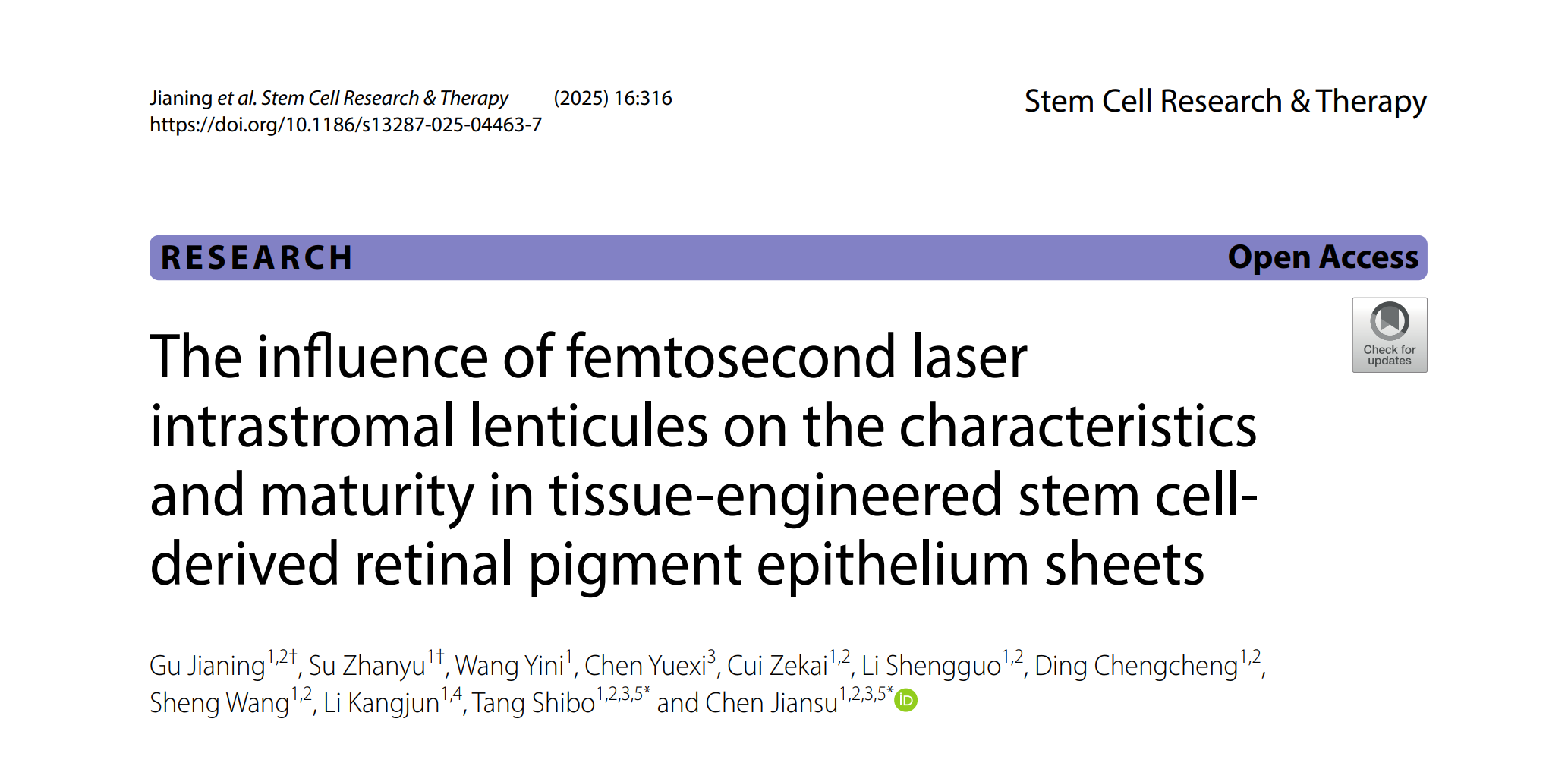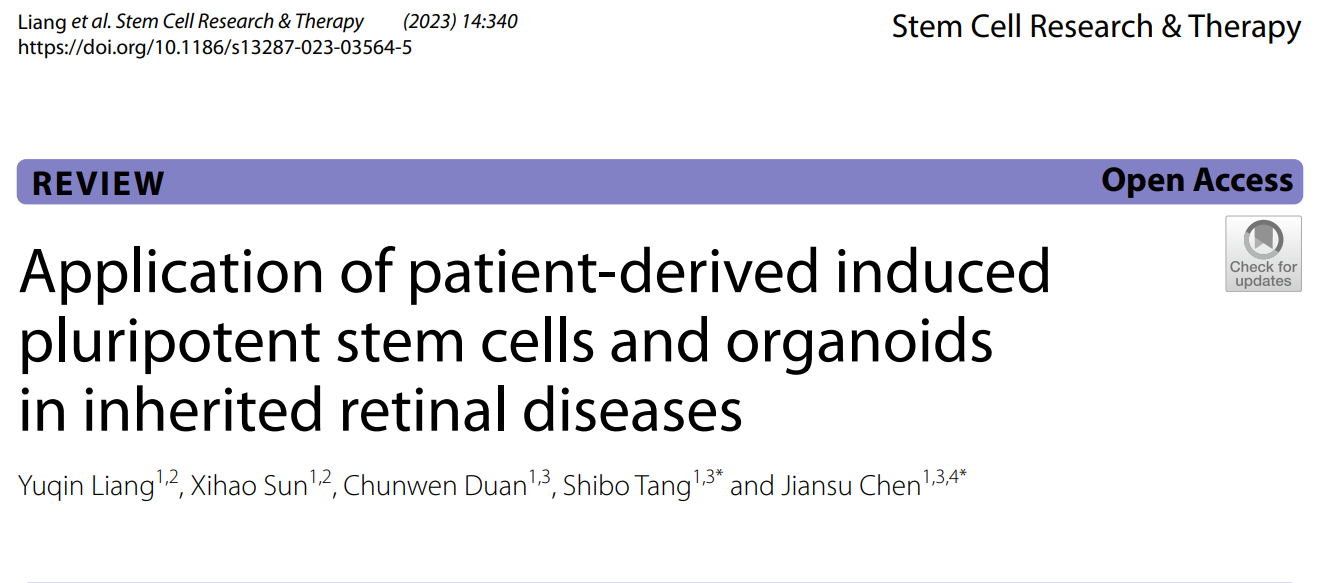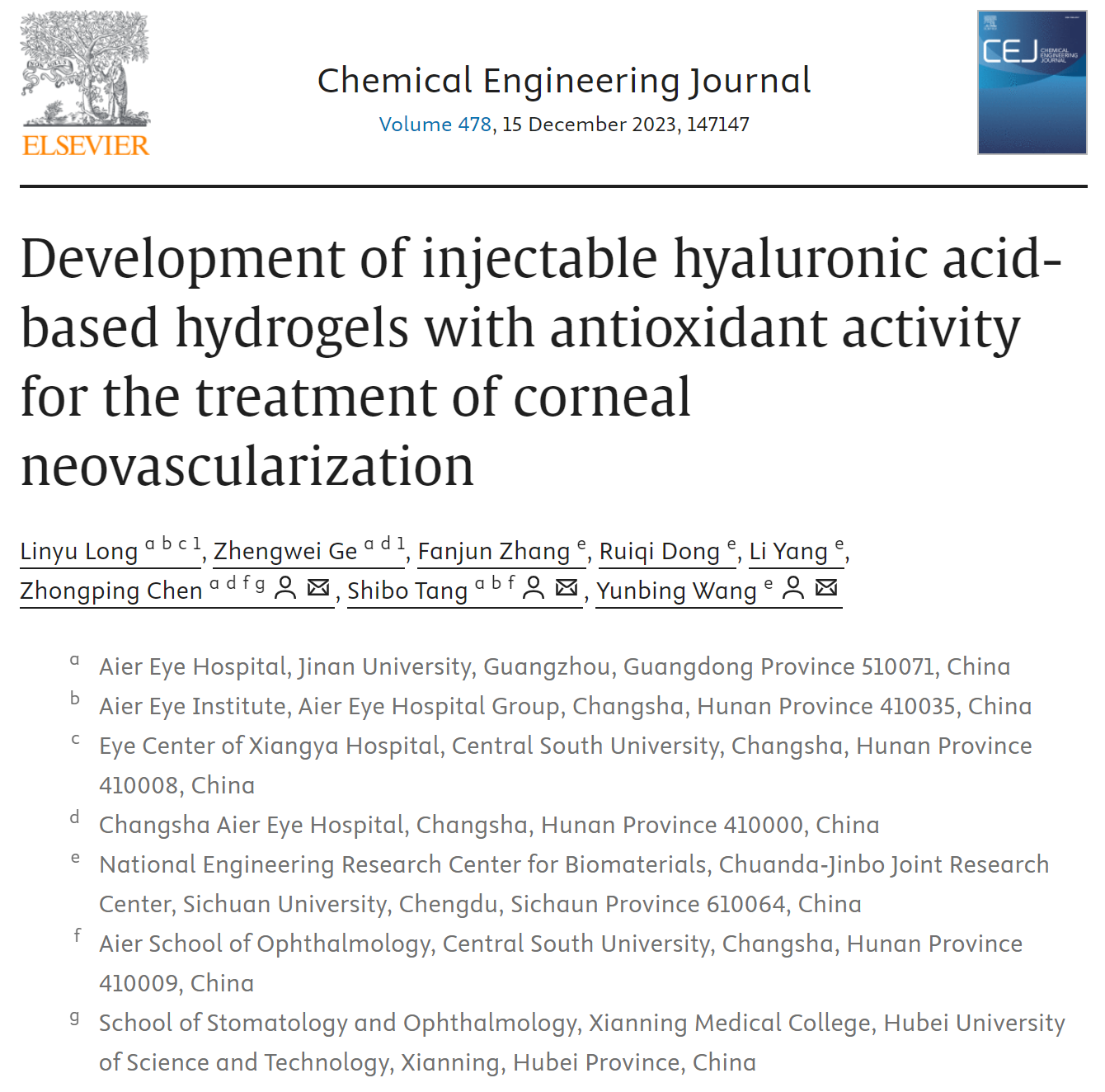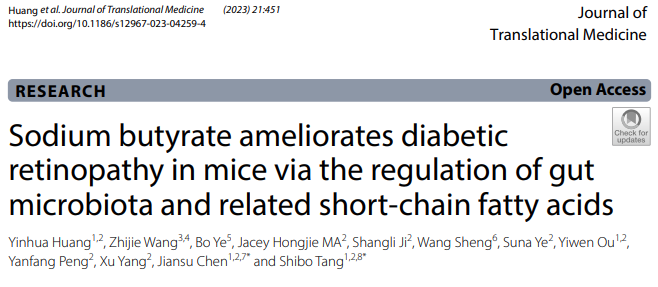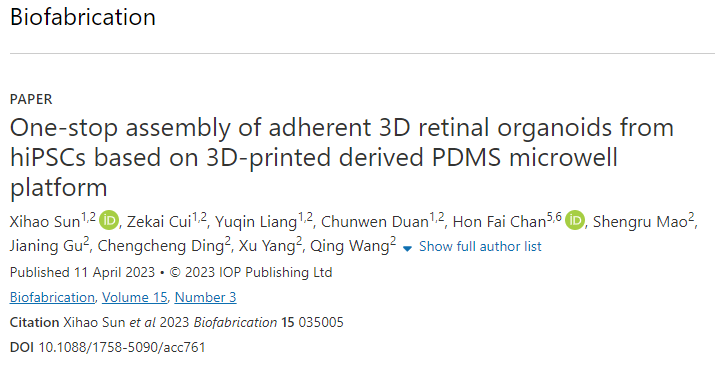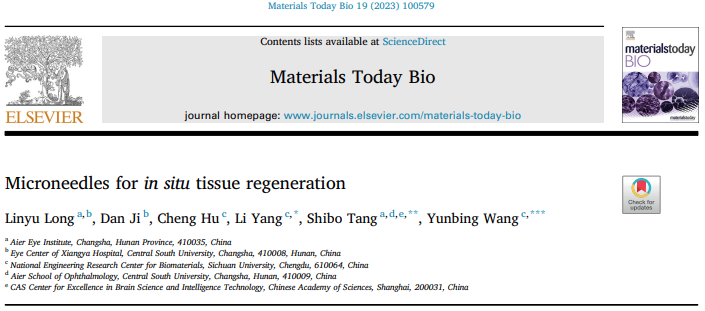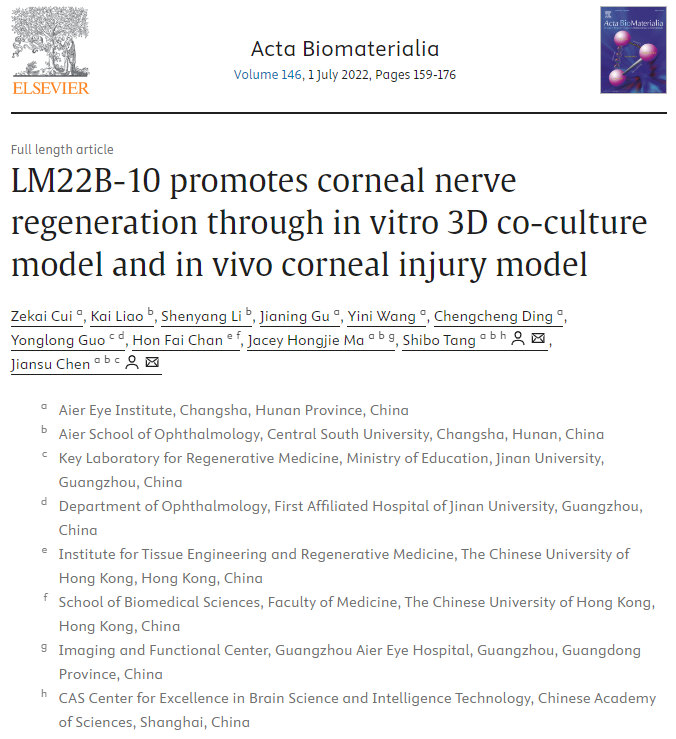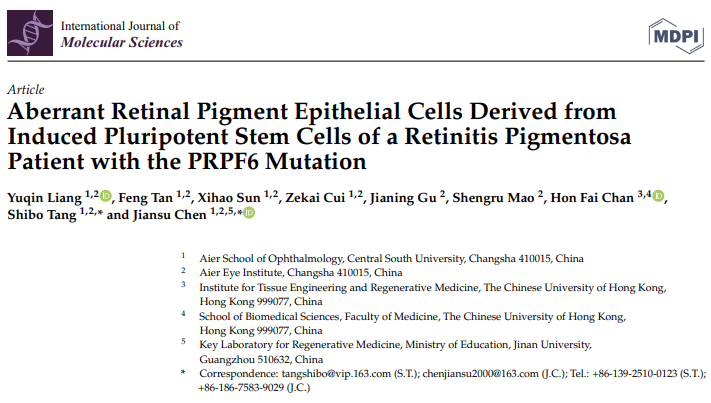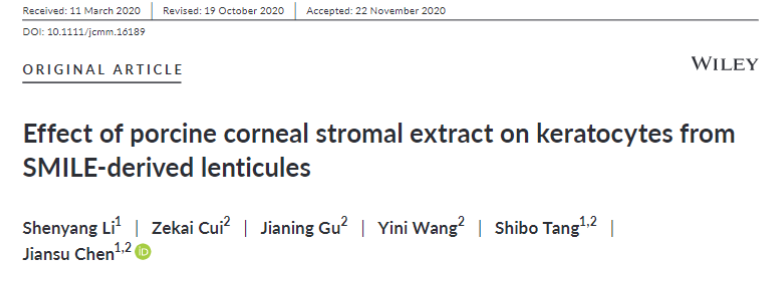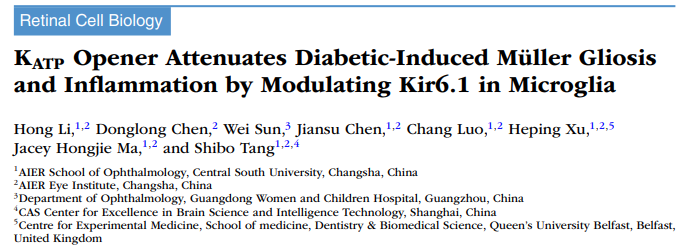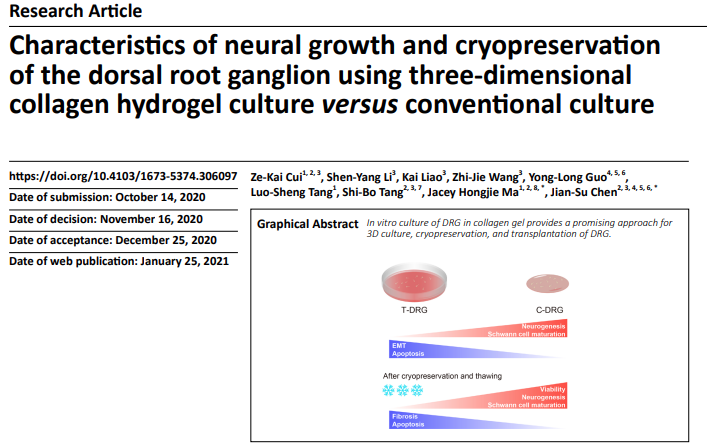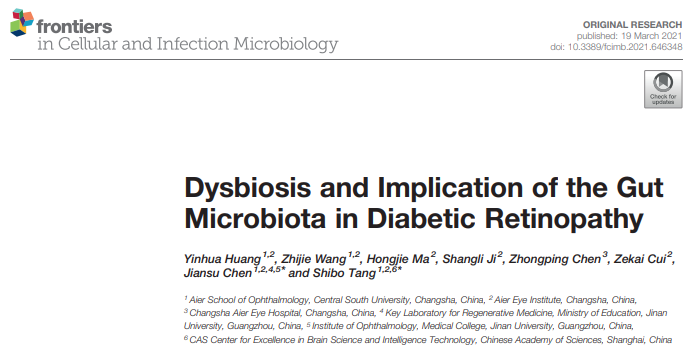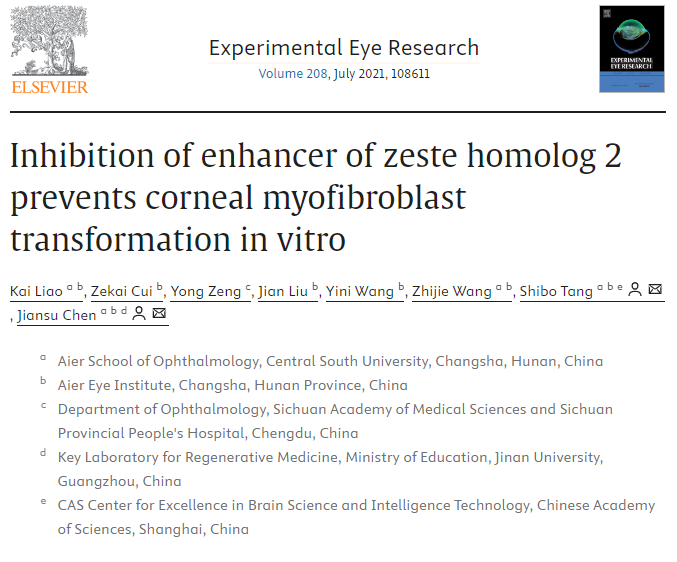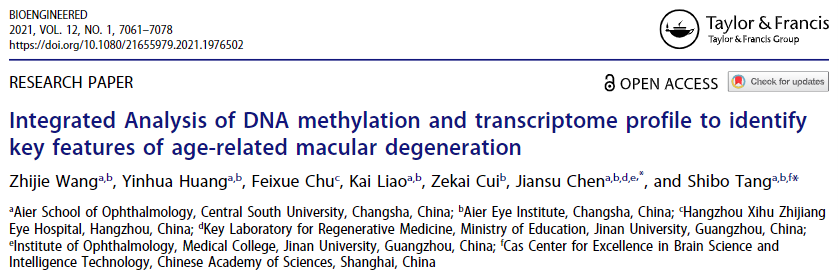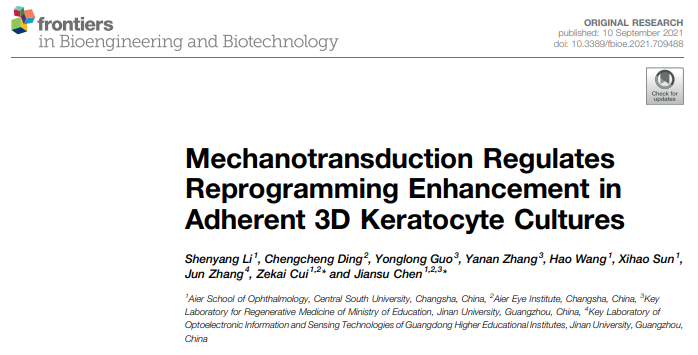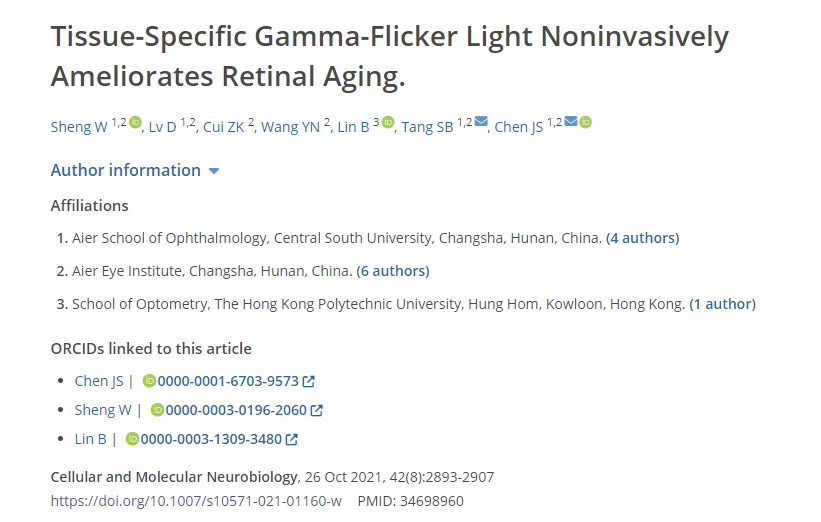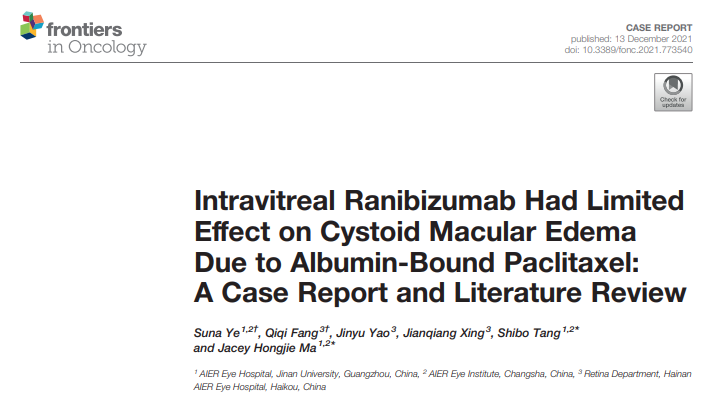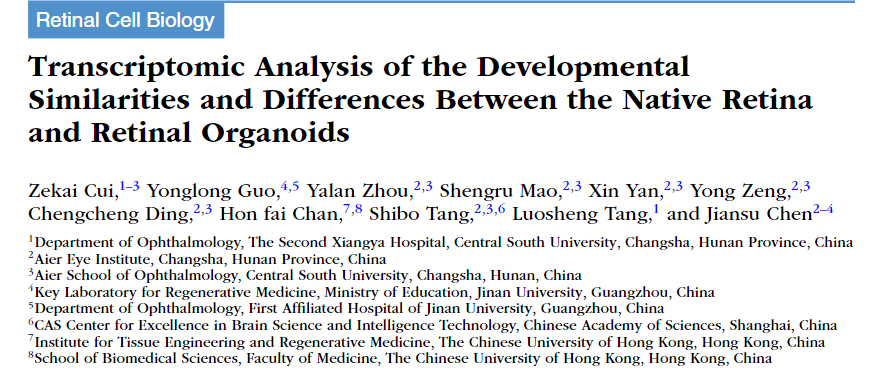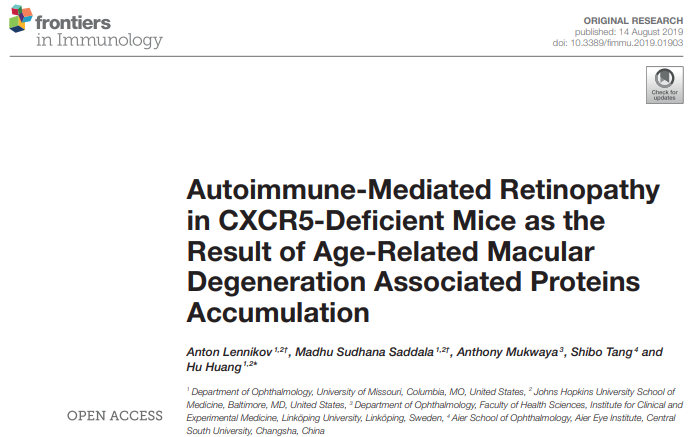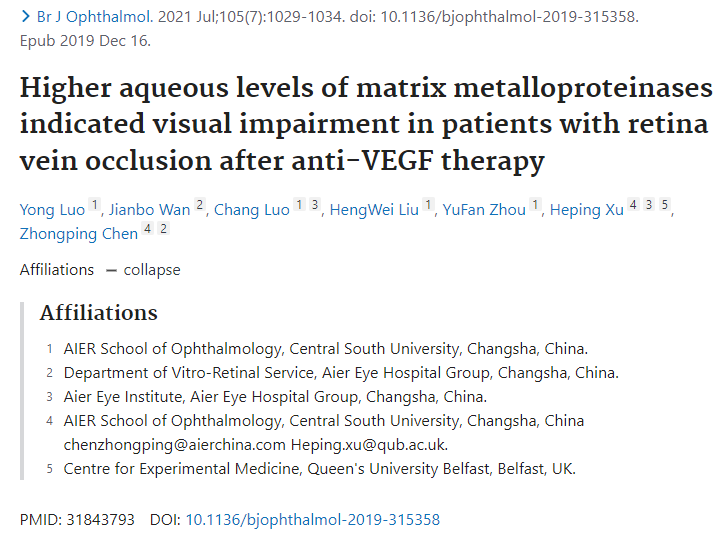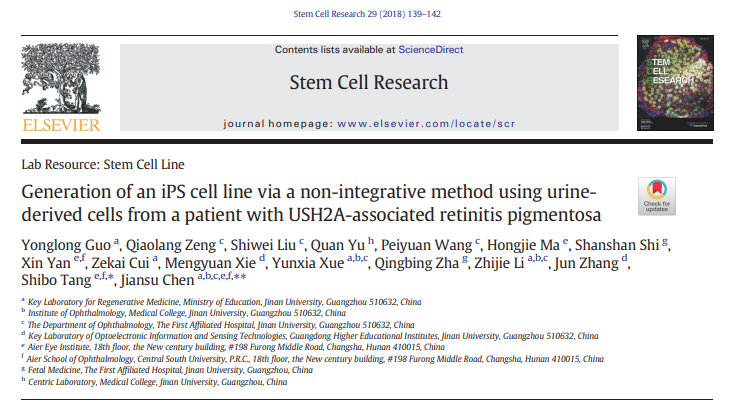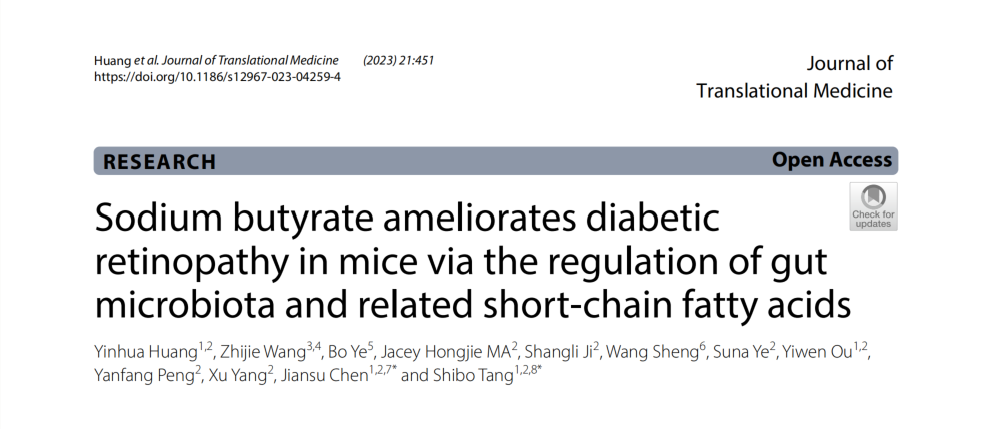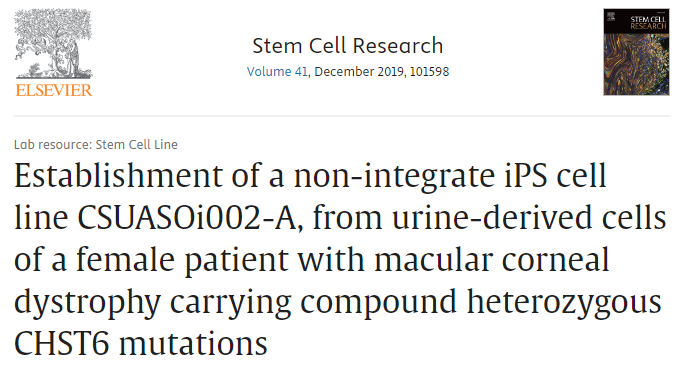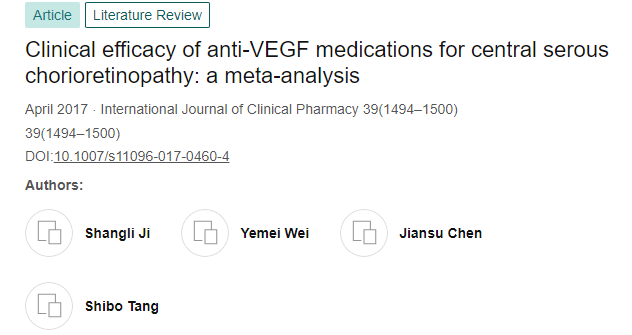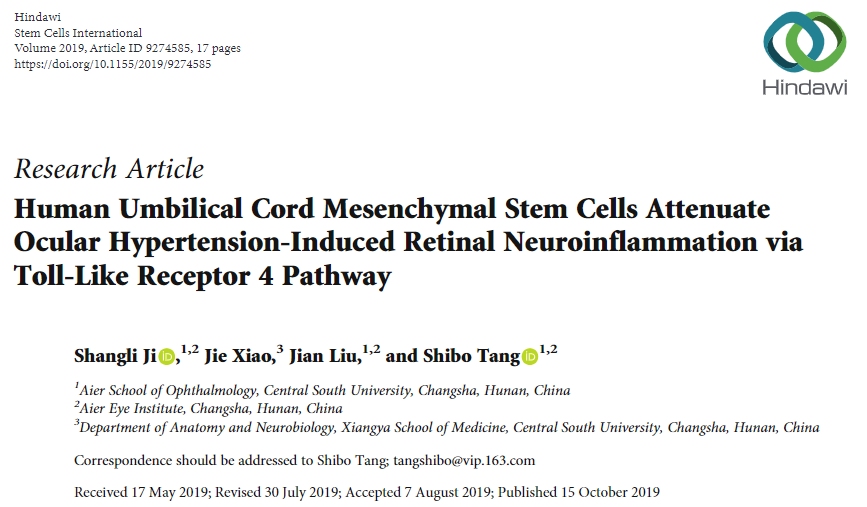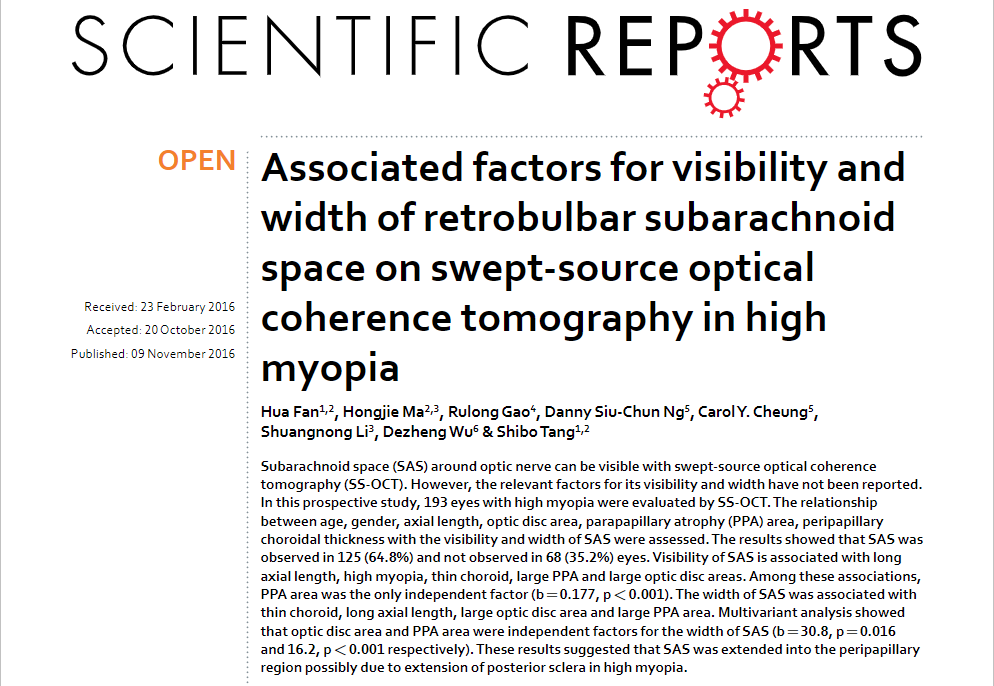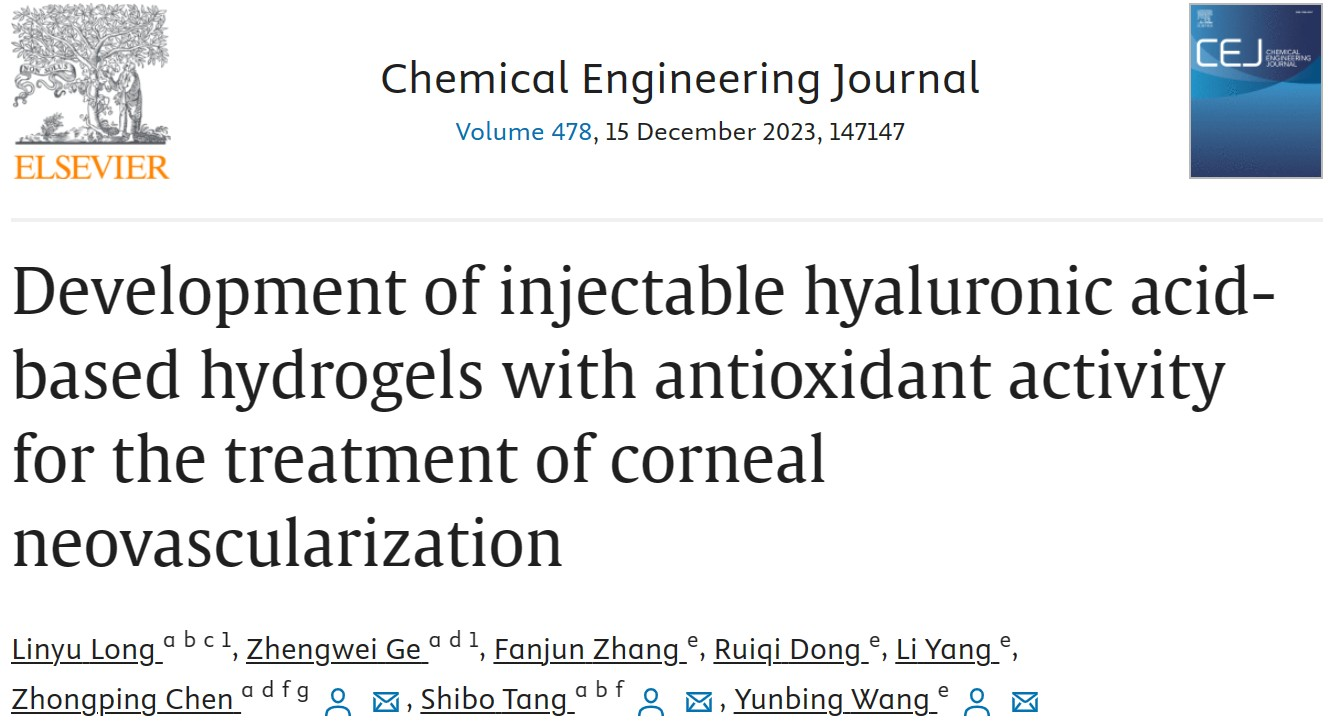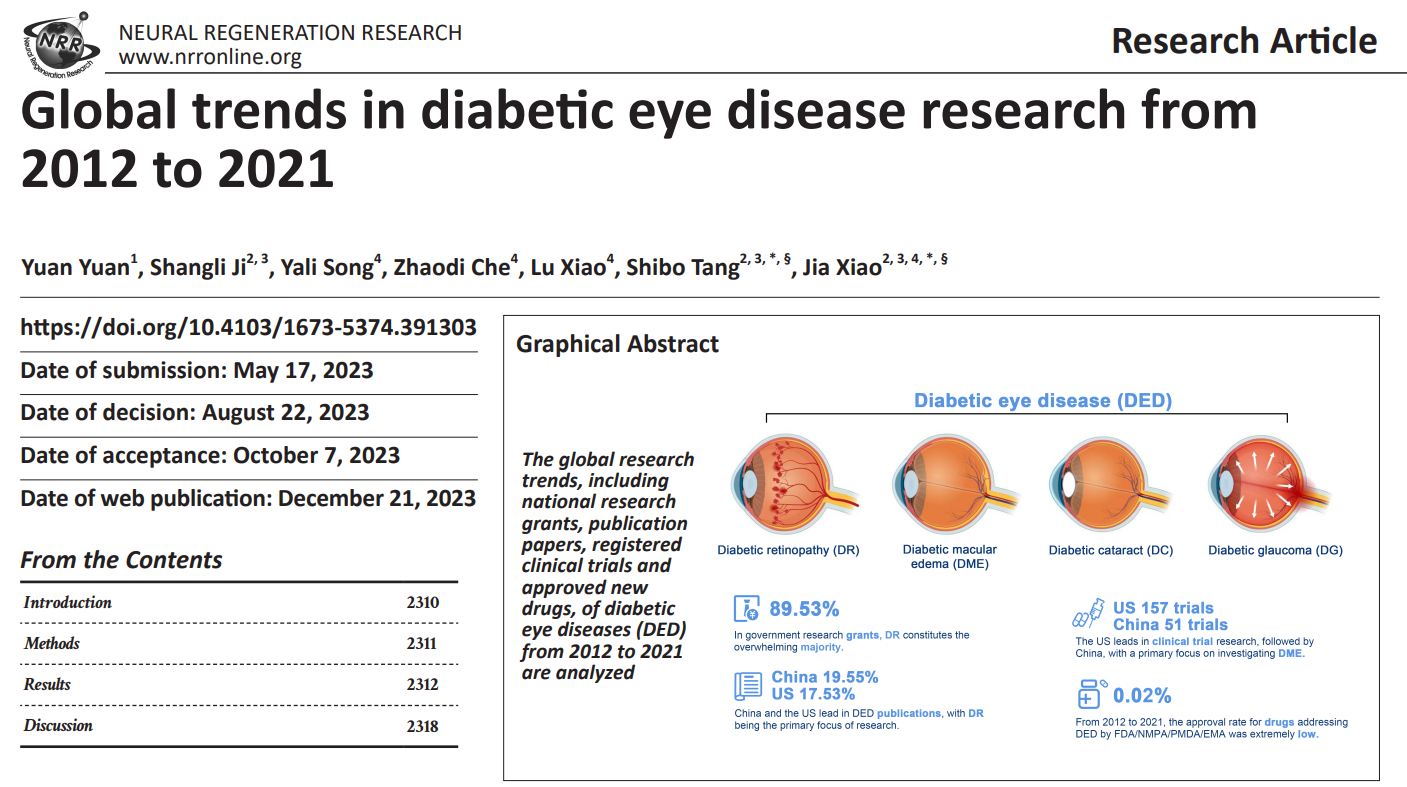- 首页
- 关于我们
概况介绍 研究方向 人才培养 委员会/committee
- 员工团队
特聘专家 主要领导 行政团队 技术团队 PI团队- 科研平台
中心实验室 实验动物中心 生物样本库- 最新资讯
- 首页
- 关于我们
概况介绍 研究方向 人才培养 委员会/committee
- 员工团队
特聘专家 主要领导 行政团队 技术团队 PI团队- 科研平台
中心实验室 实验动物中心 生物样本库- 最新资讯
Sodium butyrate ameliorates diabetic retinopathy in mice via the regulation of gut microbiota and related short-chain fatty acids发布日期: 2024-09-04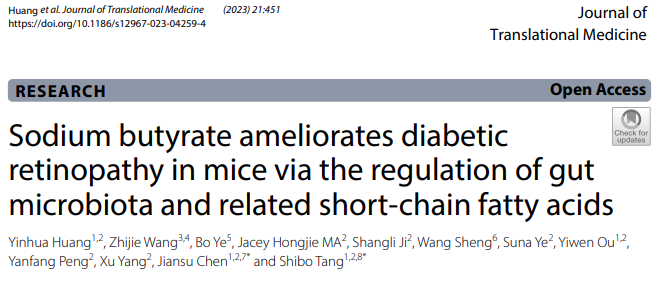
Abstract
Background: Diabetic retinopathy (DR) development is associated with disturbances in the gut microbiota and related metabolites. Butyric acid is one of the short-chain fatty acids (SCFAs), which has been found to possess a potential antidiabetic effect. However, whether butyrate has a role in DR remains elusive. This study aimed to investigate the effect and mechanism of sodium butyrate supplementation on DR.
Methods: C57BL/6J mice were divided into three groups: Control group, diabetic group, and diabetic with butyrate supplementation group. Type 1 diabetic mouse model was induced by streptozotocin. Sodium butyrate was administered by gavage to the experimental group daily for 12 weeks. Optic coherence tomography, hematoxylin-eosin, and immunostaining of whole-mount retina were used to value the changes in retinal structure. Electroretinography was performed to assess the retinal visual function. The tight junction proteins in intestinal tissue were evaluated using immunohistochemistry. 16S rRNA sequencing and LC-MS/MS were performed to determine the alteration and correlation of the gut microbiota and systemic SCFAs.
Results: Butyrate decreased blood glucose, food, and water consumption. Meanwhile, it alleviated retinal thinning and activated microglial cells but improved electroretinography visual function. Additionally, butyrate effectively enhanced the expression of ZO-1 and Occludin proteins in the small intestine. Crucially, only butyric acid, 4-methylvaleric acid, and caproic acid were significantly decreased in the plasma of diabetic mice and improved after butyrate supplementation. The deeper correlation analysis revealed nine genera strongly positively or negatively correlated with the above three SCFAs. Of note, all three positively correlated genera, including norank_f_Muribaculaceae, Ileibacterium, and Dubosiella, were significantly decreased in the diabetic mice with or without butyrate treatment. Interestingly, among the six negatively correlated genera, Escherichia-Shigella and Enterococcus were increased, while Lactobacillus, Bifidobacterium, Lachnospiraceae_NK4A136_group, and unclassified_f_Lachnospiraceae were decreased after butyrate supplementation.
Conclusion: Together, these findings demonstrate the microbiota regulating and diabetic therapeutic effects of butyrate, which can be used as a potential food supplement alternative to DR medicine.
Keywords: 4-Methylvaleric acid; Caproic acid; Diabetic retinopathy; Gut microbiota; Short-chain fatty acids; Sodium butyrate.
相关文章-
Generation of vascularized retinal organoids containing microglia based on a PDMS microwell platformAbstractRetinal organoids (ROs) offer a biomimetic in vitro model for inves...2025-10-24
-
近期,爱尔眼科长沙医学中心陈建苏教授、唐仕波教授、崔泽凯副教授团队在角膜损伤修复和视网膜疾病治疗方面研究取得了多项令人瞩目的成果,为了解致盲性角膜和视网膜疾病的...2025-08-04
-
近日,由中国医师协会眼科医师分会遗传眼病学组牵头制定的《X连锁视网膜劈裂症临床诊疗的中国专家共识(2025)》(以下简称《共识》)正式发布。X连锁视网膜劈裂症是...2025-07-07
-
AbstractBackground Recent advances in clinical trials have involved the transpla...2025-05-06
-
Inherited retinal diseases (IRDs) can induce severe sight-threatening retinal de...2024-09-11
-
Corneal neovascularization (CNV) is a condition that can severely adversely affe...2024-09-05
-
Diabetic retinopathy (DR) is a common complication of diabetes and has a high pr...2024-09-04
-
Diabetic retinopathy (DR) development is associated with disturbances in the gut...2024-09-04
-
The three-dimensional (3D) retinal organoids (ROs) derived from human induced pl...2024-09-04
-
Tissue injury is a common clinical problem, which may cause great burden on pati...2024-09-04
-
Corneal nerve wounding often causes abnormalities in the cornea and even blindne...2024-09-04
-
Pre-mRNA processing factors (PRPFs) are vital components of the spliceosome and ...2024-09-04
-
Propagating large amounts of human corneal stromal cells (hCSCs) in vitro while ...2024-09-04
-
This study aimed to determine the effect of pinacidil, a nonselective KATP chann...2024-09-04
-
In vertebrates, most somatosensory pathways begin with the activation of dorsal ...2024-09-04
-
The pathogenesis of type 2 diabetes mellitus (T2DM) is commonly associated with ...2024-09-04
-
Corneal fibroblast can be transformed into corneal myofibroblasts by TGF-β1.2024-09-04
-
Age-related macular degeneration (AMD) is a common vision-threatening disease. T...2024-09-04
-
Suspended spheroid culture using ultralow attachment plates (ULAPs) is reported ...2024-09-04
-
本申请涉及细胞和器官培养技术领域,公开了一种三维类器官灌流培养器具,包括:细胞培养室,细胞培养室用于盛放培养基;多个换液槽,设于细胞培养室,用于更换细胞培养室中...2024-09-04
-
Purpose: Retinal inflammation is involved in the pathogenesis of several retinal...2024-09-03
-
Aging is a risk factor for multiple retinal degeneration diseases. Entraining br...2024-09-03
-
Angiographically silent cystoid macular edema (CME) is a rare complication from ...2024-09-03
-
The neuroretina is protected by its own defense system, that is microglia and th...2024-09-03
-
Purpose: We performed a bioinformatic transcriptome analysis to determine the al...2024-09-03
-
Previous research has shown that CXCR5−/− mice develop retinal degeneration (RD)...2024-09-03
-
Purpose: To investigate the levels of matrix metalloproteinases (MMPs) in aqueou...2024-09-03
-
In vitro generation of a functional retinal pigment epithelium (RPE) monolayer s...2024-09-03
-
We have established an induced pluripotent stem (iPS) cell line using urine-deri...2024-09-03
-
Purpose: The purpose of this study is to investigate the potential therapeutic b...2024-09-03
-
Background Diabetic retinopathy (DR) development is associated with disturbances...2024-09-03
-
We report the human induced pluripotent stem cell line (iPSC) CSUASOi002-A, gene...2024-09-03
-
Background Central serous chorioretinopathy (CSC) is a widespread retinal disord...2024-09-03
-
Glaucoma is characterized by progressive, irreversible damage to the retinal gan...2024-09-03
-
Subarachnoid space (SAS) around optic nerve can be visible with swept-source opt...2024-09-03
-
角膜新生血管(CNV)会严重影响角膜透明度,最终可能导 致视力障碍甚至失明。目前,针对活动性 CNV 患者的药物治疗 主要是局部应用糖皮质激素眼液进而控制病情进...2023-11-30
-
Diabetic eye disease refers to a group of eye complications that occur in diabet...2023-05-01
- 员工团队
- 员工团队





